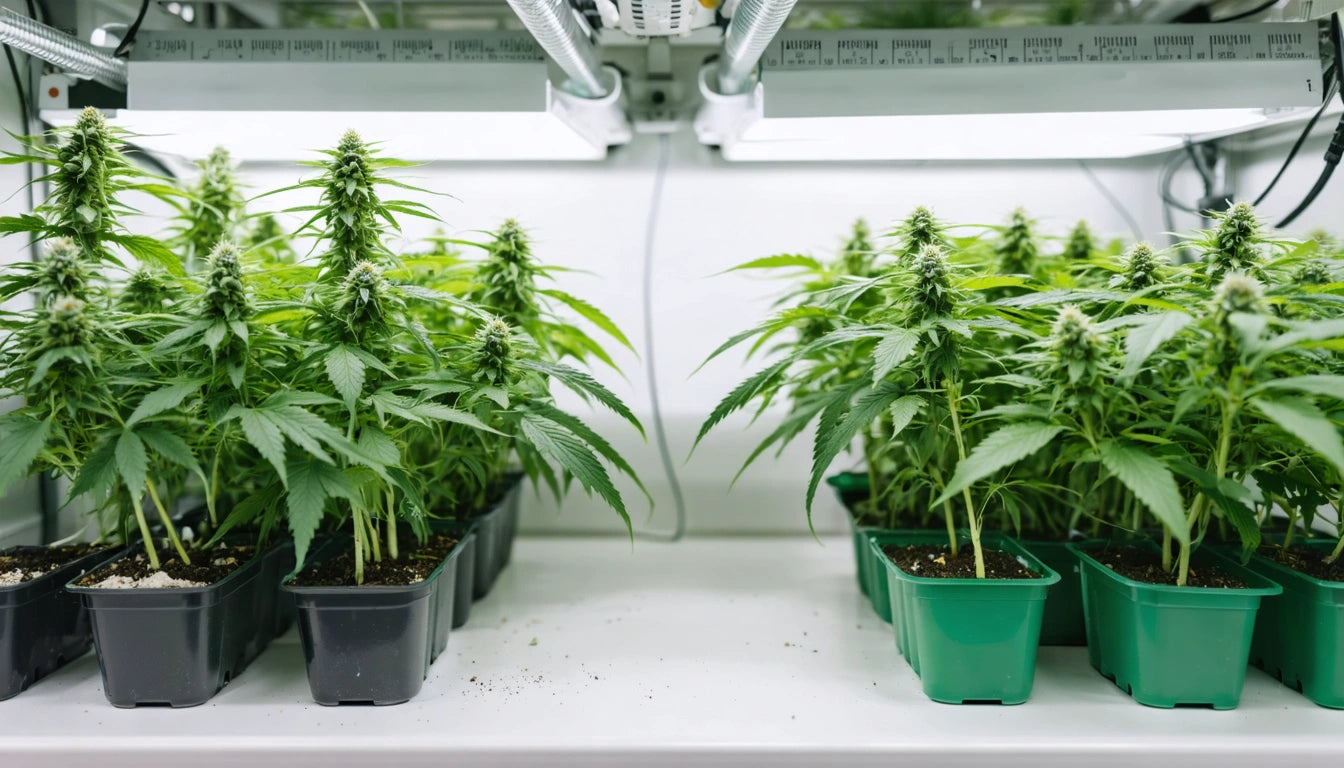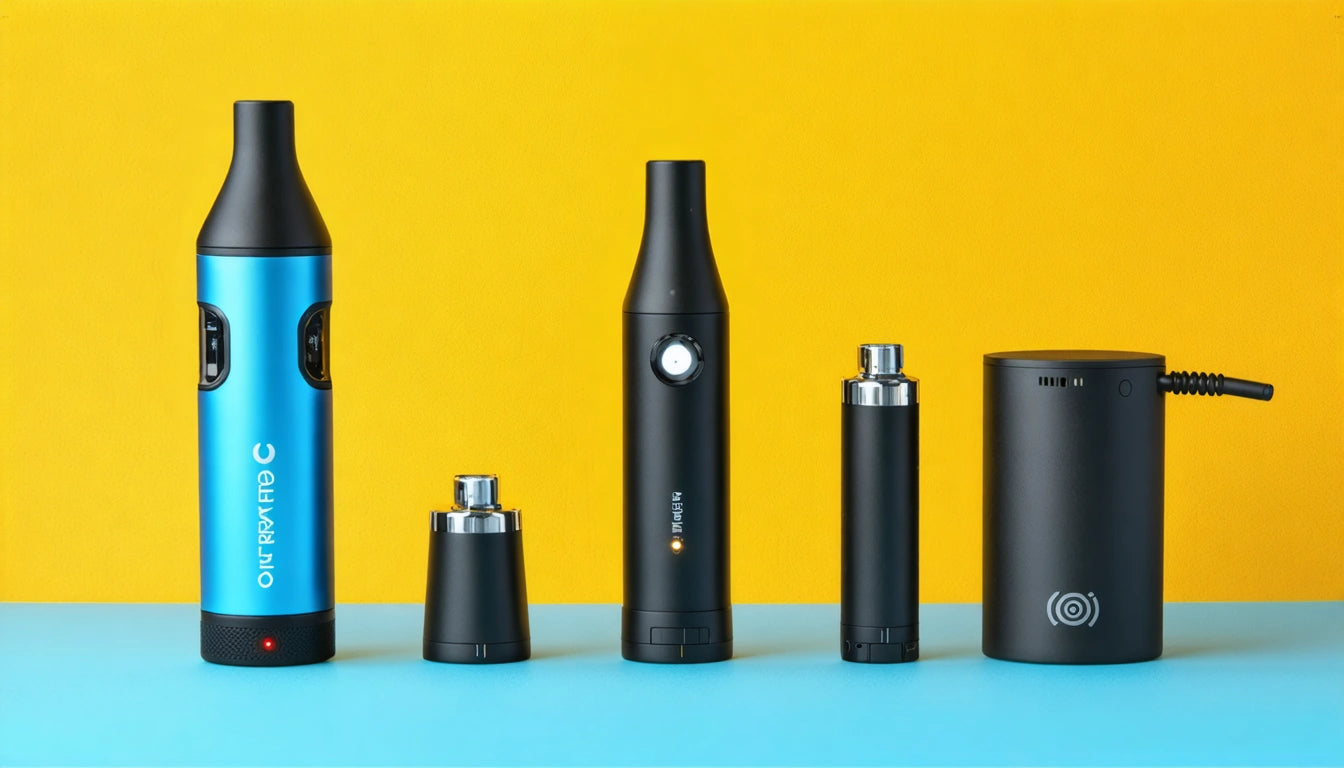Hydroponic vs. Soil: Comparing Methods for Growing Cannabis
The debate between hydroponic vs. soil growing methods continues to divide cannabis cultivators. Each approach offers distinct advantages and challenges that can significantly impact your growing experience and final product. Understanding these differences helps growers make informed decisions based on their specific goals, resources, and experience levels.
Understanding Hydroponic Weed: What Sets It Apart
What is hydroponic weed? Simply put, it's cannabis grown without soil, using nutrient-rich water solutions instead. Plants are supported by inert growing media like rockwool, coco coir, or clay pellets that provide structural support while allowing roots direct access to nutrients and oxygen.
The various hydroponic systems include deep water culture (DWC), nutrient film technique (NFT), ebb and flow, and aeroponics. Each system delivers nutrients differently, but all share the core principle of soil-free cultivation.
Pros of Hydroponic Cannabis Cultivation
- Faster growth rates, often 30-50% quicker than soil
- Higher yields per square foot
- Precise nutrient control
- Reduced pest and disease issues
- Water efficiency through recirculation
Cons of Hydroponics
- Higher initial setup costs
- Steeper learning curve
- Greater technical management required
- System failures can quickly damage plants
- Less forgiving of mistakes
Soil Cultivation Essentials: The Traditional Approach
Soil growing represents the traditional cannabis cultivation method. Plants grow in a mixture of soil, typically enhanced with organic matter and amendments. Choosing the right soil is crucial for success, as it provides both nutrients and a stable environment for root development.
Pros of Soil Growing
- More forgiving of mistakes
- Lower startup costs
- Simpler process for beginners
- Often produces more complex terpene profiles
- Can be fully organic
Cons of Soil Growing
- Typically slower growth rates
- Generally lower yields
- Higher risk of soil-borne pests and diseases
- Less precise nutrient control
- Usually requires more physical space
Comparing Growth Factors: Hydro vs Soil Cannabis
Several key factors differentiate hydroponics vs soil cannabis cultivation, affecting everything from daily maintenance to final harvest quality.
Nutrient Delivery and Management
In hydroponics, nutrients are dissolved in water at precise concentrations and delivered directly to roots. This allows for immediate uptake and quick adjustments. Hydroponic nutrients are typically synthetic and formulated for different growth stages.
Soil systems deliver nutrients more gradually through a complex ecosystem of organic matter, microorganisms, and mineral components. Organic soil nutrients break down over time, creating a buffer that helps prevent nutrient burn but offers less precise control.
Growth Rate and Cycle Length
Hydroponic systems typically produce faster growth and shorter cultivation cycles. With direct nutrient access and optimized oxygen exposure at the root zone, plants can focus energy on vegetative growth and flower production rather than expanding root systems to search for nutrients.
Soil growing generally produces slower, steadier growth patterns. While this extends the overall cultivation cycle, many growers believe it allows for more natural development of cannabinoids and terpenes.
Yield and Potency Differences Between Methods
When comparing hydroponic weed vs regular weed (soil-grown), several quality factors come into play:
Yield Comparison
Hydroponic systems typically produce higher yields per square foot of growing space. With optimized nutrient delivery and the ability to place plants closer together, commercial growers often prefer hydroponics for maximizing production efficiency.
For processing operations that require consistent, high-volume production, equipment like industrial-grade cannabis grinders can handle the increased output from hydroponic operations while maintaining quality standards.
Flavor and Cannabinoid Profiles
Many connoisseurs argue that soil-grown cannabis develops more complex terpene profiles and flavors. The slower growth and diverse microbial life in soil may contribute to more nuanced chemical development.
Hydroponic cannabis often produces higher THC percentages but may have less complex terpene profiles. However, advanced hydroponic growers can achieve remarkable quality through careful system management.
Cost and Resource Requirements for Each Method
The hydroponic vs soil pros and cons extend to resource utilization and economic factors:
Initial Investment
Hydroponic setups require higher initial investment in equipment such as pumps, reservoirs, growing media, and monitoring tools. A basic DWC system might cost $300-500 for a small grow, while more advanced systems can run into thousands of dollars.
Soil setups have lower startup costs, often requiring just containers, quality soil, and basic amendments. A comparable soil setup might cost $100-200 initially.
Ongoing Expenses
Hydroponics uses more electricity for pumps and monitoring equipment but can be more water-efficient through recirculation. Nutrient costs are typically higher but more precisely controlled.
Soil growing uses less electricity but may require more water. Soil amendments and fertilizers can be less expensive, especially when using organic methods.
Choosing the Right Method for Your Cultivation Goals
When deciding between soil vs hydroponics weed cultivation, consider these guiding factors:
Experience Level Considerations
For beginners, soil growing offers a more forgiving introduction to cannabis cultivation. The buffer capacity of soil helps prevent rapid nutrient fluctuations, giving new growers more time to identify and correct issues.
Experienced growers might prefer hydroponics for the precise control and optimization potential. The ability to fine-tune every aspect of the growing environment appeals to those who enjoy technical cultivation.
Space and Scale Factors
Limited space often favors hydroponics, which can maximize yield per square foot. Vertical hydroponic systems can further multiply growing area in height-restricted environments.
Larger spaces with less height might benefit from traditional soil beds, which require less technical infrastructure but more horizontal area.
Ultimately, the choice between hydroponic vs soil growing methods depends on balancing your goals, resources, and growing style. Many successful cultivators eventually incorporate elements of both approaches, creating hybrid systems that leverage the advantages of each method while minimizing their respective limitations.











Leave a comment
All comments are moderated before being published.
This site is protected by hCaptcha and the hCaptcha Privacy Policy and Terms of Service apply.